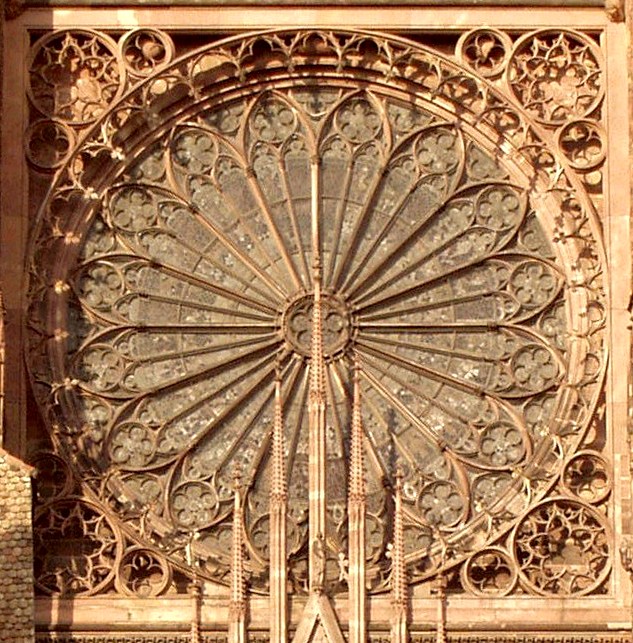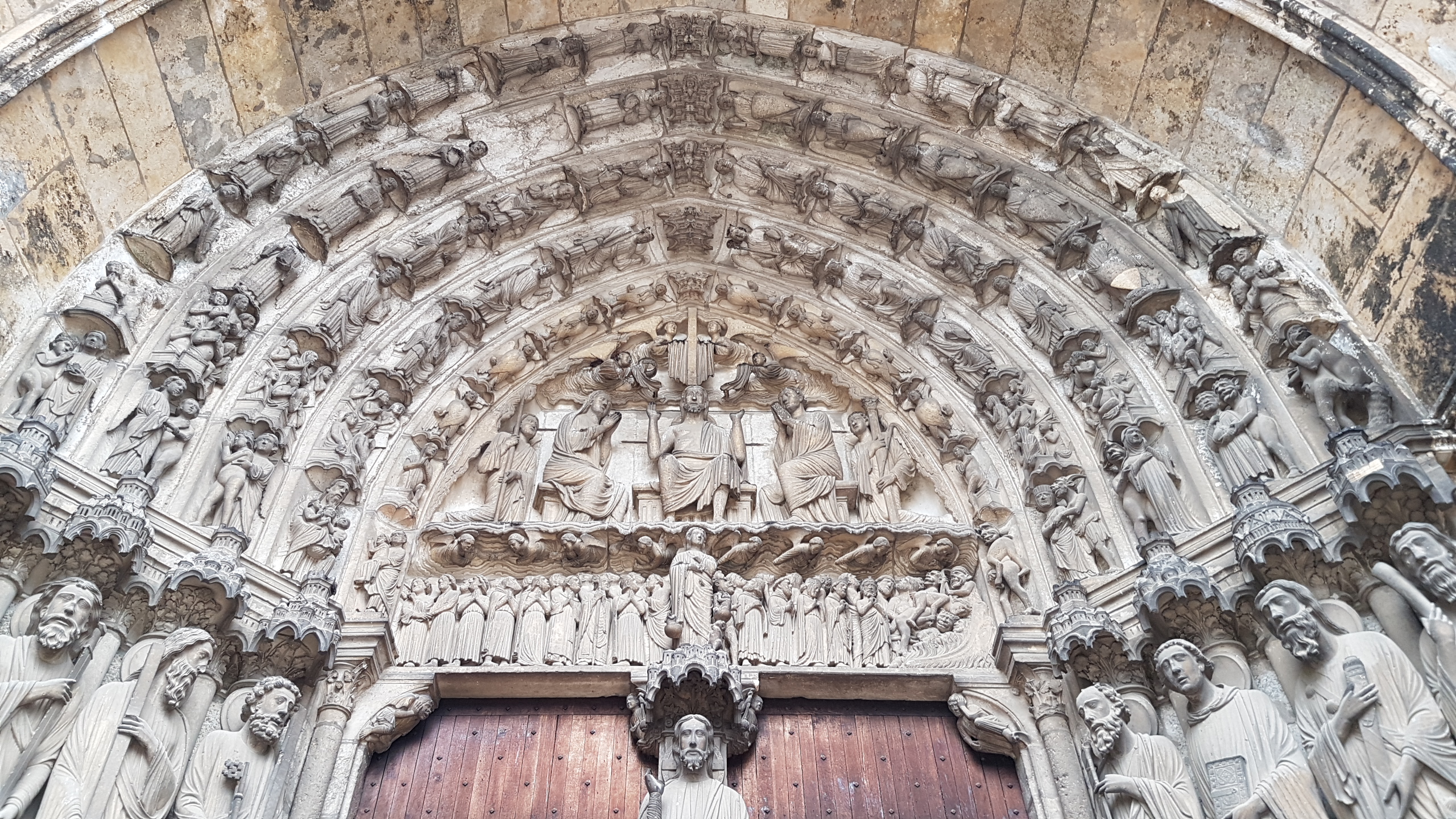|
Aulps Abbey
Aulps Abbey is a former Cistercian monastery located at an altitude of 810 metres in the village of Saint-Jean-d'Aulps in the Aulps Valley, Haute-Savoie, French Alps. It is 7 km from Morzine, 25 km from Thonon and 60 km from Geneva. Aulps Abbey was a major Cistercian site in the Haute Savoie region for almost seven hundred years, from its foundation in the 1090s to its suppression in 1793. The church was partially destroyed in 1823, for its stones, but the superb 13th century façade remains standing. In addition to the majestic ruins of the abbey, classified as a '' monument historique'' in 1902, Abbaye the three-hectare estate includes agricultural buildings, cellars, a gatehouse and a medicinal garden. History Aulph Abbey was founded at the very end of the 11th century by monks from Molesme Abbey in Burgundy, including the eventual second abbot of Aulph Guarinus of Sitten, later Saint Guarinus. Its name derives from the Latin word ''alpibus'' which means " ... [...More Info...] [...Related Items...] OR: [Wikipedia] [Google] [Baidu] |
Abbaye Neige- 4
An abbey is a type of monastery used by members of a religious order under the governance of an abbot or abbess. Abbeys provide a complex of buildings and land for religious activities, work, and housing of Christian monks and nuns. The concept of the abbey has developed over many centuries from the early monastic ways of religious men and women where they would live isolated from the lay community about them. Religious life in an abbey may be monastic. An abbey may be the home of an enclosed religious order or may be open to visitors. The layout of the church and associated buildings of an abbey often follows a set plan determined by the founding religious order. Abbeys are often self-sufficient while using any abundance of produce or skill to provide care to the poor and needy, refuge to the persecuted, or education to the young. Some abbeys offer accommodation to people who are seeking spiritual retreat. There are many famous abbeys across the Mediterranean Basin and Euro ... [...More Info...] [...Related Items...] OR: [Wikipedia] [Google] [Baidu] |
Faucigny
Faucigny ( it, Fossigni) is a commune in the Haute-Savoie department in the Auvergne-Rhône-Alpes region in south-eastern France. Historically, Faucigny was a region in Savoy which included the area of the modern ''département'' of Haute Savoie and the municipalities of Chamonix, Argentière, and Les Houches. Geography In the Faucigny region, the river Arve flows through the low-lying, agricultural Arve Valley. The village of Faucigny is at an elevation of approximately 639 m., northeast of La Roche-sur-Foron, and about 20 km. southeast of the city of Geneva. The village lies on a river terrace on the eastern side of the Arve Valley. History The fertile valley of the Arve and the area around Faucigny were already settled in neolithic times, and there are numerous Roman ruins. Legend suggests that the area was the estates of the Roman family Falcinius. It was known by various names in the Middle Ages: Falciniacum, Fociniacum and Fossiniacum, but the first documented name ... [...More Info...] [...Related Items...] OR: [Wikipedia] [Google] [Baidu] |
Waterleaf , sculptural decoration used on the capitals of columns in late twelfth century Romanesque architecture
{{disambig, plant ...
In botany, waterleaf can mean: * Any plant of the genus ''Hydrophyllum'' * Any plant which is a member of the waterleaf family, Hydrophylloideae * ''Talinum fruticosum'', a leaf vegetable of the family Talinaceae In architecture, waterleaf means: * Waterleaf (architecture) In architecture, a waterleaf is a distinctive sculptural motif used on the capitals of columns and pilasters in European buildings during the late twelfth century. It is a highly simplified plant motif, characteristic of the "late Norman" style of ... [...More Info...] [...Related Items...] OR: [Wikipedia] [Google] [Baidu] |
Casamari
Casamari Abbey is a Cistercian abbey in the Province of Frosinone, Lazio, Italy, about 10 kilometers (6 miles) east-south-east of Veroli. It marks the site of Cereatae, the birthplace of Caius Marius, afterwards known, as inscriptions attest, as Cereatae Marianae, having been separated perhaps by the triumvirs from the territory of Arpinum. In the early Imperial times it was an independent community. The current Abbot of the Abbey of Casamari, as of 2017, is the Right Reverend Abbot Dom Eugenio Romagnuolo, President of the Cistercian Congregation of Casamari. History Benedictine A chronicle of the abbey from the 13th century dates its founding to the 9th century as a Benedictine monastery with the same name. Initially a small community with a simple church dedicated to Saints John and Paul, the buildings were expanded in the mid-11th century by its then-Abbot Giovanni. That it became a sphere of influence for the region at that time is shown by the large number of donatio ... [...More Info...] [...Related Items...] OR: [Wikipedia] [Google] [Baidu] |
Acey Abbey
Acey Abbey (french: Abbaye d'Acey; la, Aceyum) is a Cistercian abbey founded in 1136, and occupied since 1873 by Trappist monks. It is located in Vitreux in the department of Jura, France, on the River Ognon, about 26 kilometres north-north-east of Dole and about 7 kilometres north of Gendrey. History The abbey was built in 1136 at the instigation of the Archbishop of Besançon, Anseric de Montréal, and of Renaud III, Count of Burgundy, about 5 kilometres distant from an existing settlement of hermits. The initial community of monks were from Cherlieu Abbey, and Acey was therefore of the filiation of Clairvaux. The new foundation grew rapidly and had soon built six granges. In 1184 it was able to found a daughter house, Pilis Abbey in Hungary (dissolved in 1526). At the end of the Middle Ages it fell into the hands of commendatory abbots. Its location on the boundary of the Free County of Burgundy and the Duchy of Burgundy caused it to be involved in warfare in 1435 and 1 ... [...More Info...] [...Related Items...] OR: [Wikipedia] [Google] [Baidu] |
Hauterive Abbey
Hauterive Abbey (french: Abbaye d’Hauterive) is a Cistercian abbey in the Swiss municipality of Hauterive in the canton of Fribourg. It is a Swiss heritage site of national significance. The entire Hauterive area is part of the Inventory of Swiss Heritage Sites. History The land for the abbey was donated between 1132-1137 by Baron Guillaume de Glâne (died in 1143, his grave is in the church). After monks moved down from Cherlieu Abbey in northern Burgundy and inhabited the buildings, the Bishop of Lausanne granted permission to consecrate the abbey in 1137. It was then consecrated on 25 February 1138 as the ''sancte Abbatia Marie de Altaripa''. Pope Innocent II confirmed this consecration in 1142. With support from the local nobility and the Bishop of Lausanne, the abbey flourished both economically and culturally in the 12th and early 13th centuries. In 1157 the Dukes of Zähringen granted the abbey their protection and exemption from tolls. The abbey quickly bec ... [...More Info...] [...Related Items...] OR: [Wikipedia] [Google] [Baidu] |
Rose Window
Rose window is often used as a generic term applied to a circular window, but is especially used for those found in Gothic cathedrals and churches. The windows are divided into segments by stone mullions and tracery. The term ''rose window'' was not used before the 17th century and comes from the English flower name rose. The name "wheel window" is often applied to a window divided by simple spokes radiating from a central boss or opening, while the term "rose window" is reserved for those windows, sometimes of a highly complex design, which can be seen to bear similarity to a multi-petalled rose. Rose windows are also called "Catherine windows" after Saint Catherine of Alexandria, who was sentenced to be executed on a spiked breaking wheel. A circular window without tracery such as are found in many Italian churches, is referred to as an ocular window or oculus. Rose windows are particularly characteristic of Gothic architecture and may be seen in all the major Gothic C ... [...More Info...] [...Related Items...] OR: [Wikipedia] [Google] [Baidu] |
Archivolt
An archivolt (or voussure) is an ornamental moulding or band following the curve on the underside of an arch. It is composed of bands of ornamental mouldings (or other architectural elements) surrounding an arched opening, corresponding to the architrave in the case of a rectangular opening. The word is sometimes used to refer to the under-side or inner curve of the arch itself (more properly, the ''intrados''). Most commonly archivolts are found as a feature of the arches of church portals. The mouldings and sculptures on these archivolts are used to convey a theological story or depict religious figures and ideologies of the church in order to represent the gateway between the holy space of the church and the external world. The presence of archivolts on churches is seen throughout history, although their design, both architecturally and artistically, is heavily influenced by the period they were built in and the churches they were designed for. Etymology The word origin ... [...More Info...] [...Related Items...] OR: [Wikipedia] [Google] [Baidu] |
Bernard Of Clairvaux
Bernard of Clairvaux, Cistercians, O. Cist. ( la, Bernardus Claraevallensis; 109020 August 1153), venerated as Saint Bernard, was an abbot, Mysticism, mystic, co-founder of the Knights Templars, and a major leader in the reformation of the Benedictines, Benedictine Order through the nascent Order of Cistercians, Cistercian Order. He was sent to found Clairvaux Abbey at an isolated clearing in a glen known as the ''Val d'Absinthe'', about southeast of Bar-sur-Aube. In the year 1128, Bernard attended the Council of Troyes 1129, Council of Troyes, at which he traced the outlines of the Rule of the Knights Templar, which soon became an ideal of Christian nobility. On the death of Pope Honorius II in 1130, a schism arose in the church. Bernard was a major proponent of Pope Innocent II, arguing effectively for his legitimacy over the Antipope Anacletus II. In 1139, Bernard attended the Second Council of the Lateran and criticized Peter Abelard vocally. Bernard advocated crusades in ... [...More Info...] [...Related Items...] OR: [Wikipedia] [Google] [Baidu] |
Tuff
Tuff is a type of rock made of volcanic ash ejected from a vent during a volcanic eruption. Following ejection and deposition, the ash is lithified into a solid rock. Rock that contains greater than 75% ash is considered tuff, while rock containing 25% to 75% ash is described as tuffaceous (for example, ''tuffaceous sandstone''). Tuff composed of sandy volcanic material can be referred to as volcanic sandstone. Tuff is a relatively soft rock, so it has been used for construction since ancient times. Because it is common in Italy, the Romans used it often for construction. The Rapa Nui people used it to make most of the '' moai'' statues on Easter Island. Tuff can be classified as either igneous or sedimentary rock. It is usually studied in the context of igneous petrology, although it is sometimes described using sedimentological terms. Tuff is often erroneously called tufa in guidebooks and in television programmes. Volcanic ash The material that is expelled in a ... [...More Info...] [...Related Items...] OR: [Wikipedia] [Google] [Baidu] |







